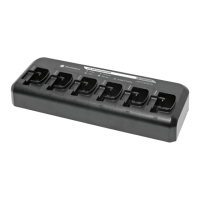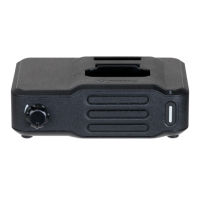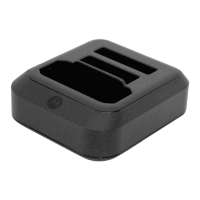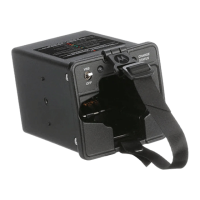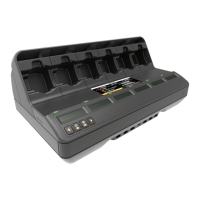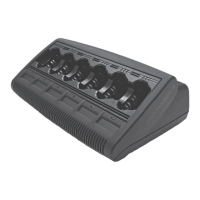• 6 •
3. PREPARING TO CHARGE
3.1 If necessary to remove battery from
vehicle to charge, always remove
grounded terminal from battery rst. Make
sure all accessories in the vehicle are off,
so as not to cause an arc.
3.2 Be sure area around battery is well
ventilated while battery is being charged.
3.3 Clean battery terminals. Be careful to
keep corrosion from coming in contact
with eyes.
3.4 Add distilled water in each cell until
battery acid reaches level specied by
battery manufacturer. Do not overll. For a
battery without removable cell caps, such
as valve regulated lead acid batteries,
carefully follow manufacturer’s recharging
instructions.
3.5 Study all battery manufacturer’s
specic precautions while charging and
recommended rates of charge.
3.6 Determine voltage of battery by referring
to car owner’s manual and make sure that
output voltage selector switch is set at
correct voltage. If charger has adjustable
charge rate, charge battery initially at
lowest rate.
4. CHARGER LOCATION
4.1 Locate charger as far away from battery
as DC cables permit.
4.2 Never place charger directly above
battery being charged; gases from battery
will corrode and damage charger.
4.3 Never allow battery acid to drip on
charger when reading electrolyte specic
gravity or lling battery.
4.4 Do not operate charger in a closed-in
area or restrict ventilation in any way.
4.5 Do not set a battery on top of charger.
5. DC CONNECTION PRECAUTIONS
5.1 Connect and disconnect DC output clips
only after removing AC cord from electric
outlet. Never allow clips to touch each other.
5.2 Attach clips to battery and chassis, as
indicated in sections 6 and 7.
6. FOLLOW THESE STEPS WHEN BATTERY IS INSTALLED IN VEHICLE
WARNING: A SPARK NEAR THE
BATTERY MAY CAUSE A BATTERY
EXPLOSION. TO REDUCE THE RISK
OF A SPARK NEAR THE BATTERY:
6.1 Position AC and DC cords to reduce risk
of damage by hood, door, or moving
engine part.
6.2 Stay clear of fan blades, belts, pulleys,
and other parts that can cause injury to
persons.
6.3 Check polarity of battery posts. POSITIVE
(POS, P, +) battery post usually has larger
diameter than NEGATIVE (NEG, N, –) post.
6.4 Determine which post of battery is
grounded (connected) to the chassis. If
negative post is grounded to chassis (as
in most vehicles), see (6.5). If positive
post is grounded to the chassis, see (6.6).
6.5 For negative-grounded vehicle, connect
POSITIVE (RED) clip from battery charger
to POSITIVE (POS, P, +) ungrounded post
of battery. Connect NEGATIVE (BLACK)
clip to vehicle chassis or engine block
away from battery. Do not connect clip to
carburetor, fuel lines, or sheet-metal body
parts. Connect to a heavy gauge metal
part of the frame or engine block.
6.6 For positive-grounded vehicle, connect
NEGATIVE (BLACK) clip from battery
charger to NEGATIVE (NEG, N, –)
ungrounded post of battery. Connect
POSITIVE (RED) clip to vehicle chassis
or engine block away from battery. Do
not connect clip to carburetor, fuel lines,
or sheet-metal body parts. Connect to a
heavy gauge metal part of the frame or
engine block.
6.7 When disconnecting charger, turn
switches to off, disconnect AC cord,
remove clip from vehicle chassis, and
then remove clip from battery terminal.
6.8 See Operating Instructions for length of
charge information.
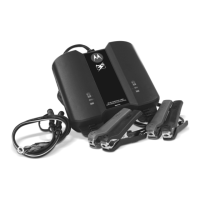
